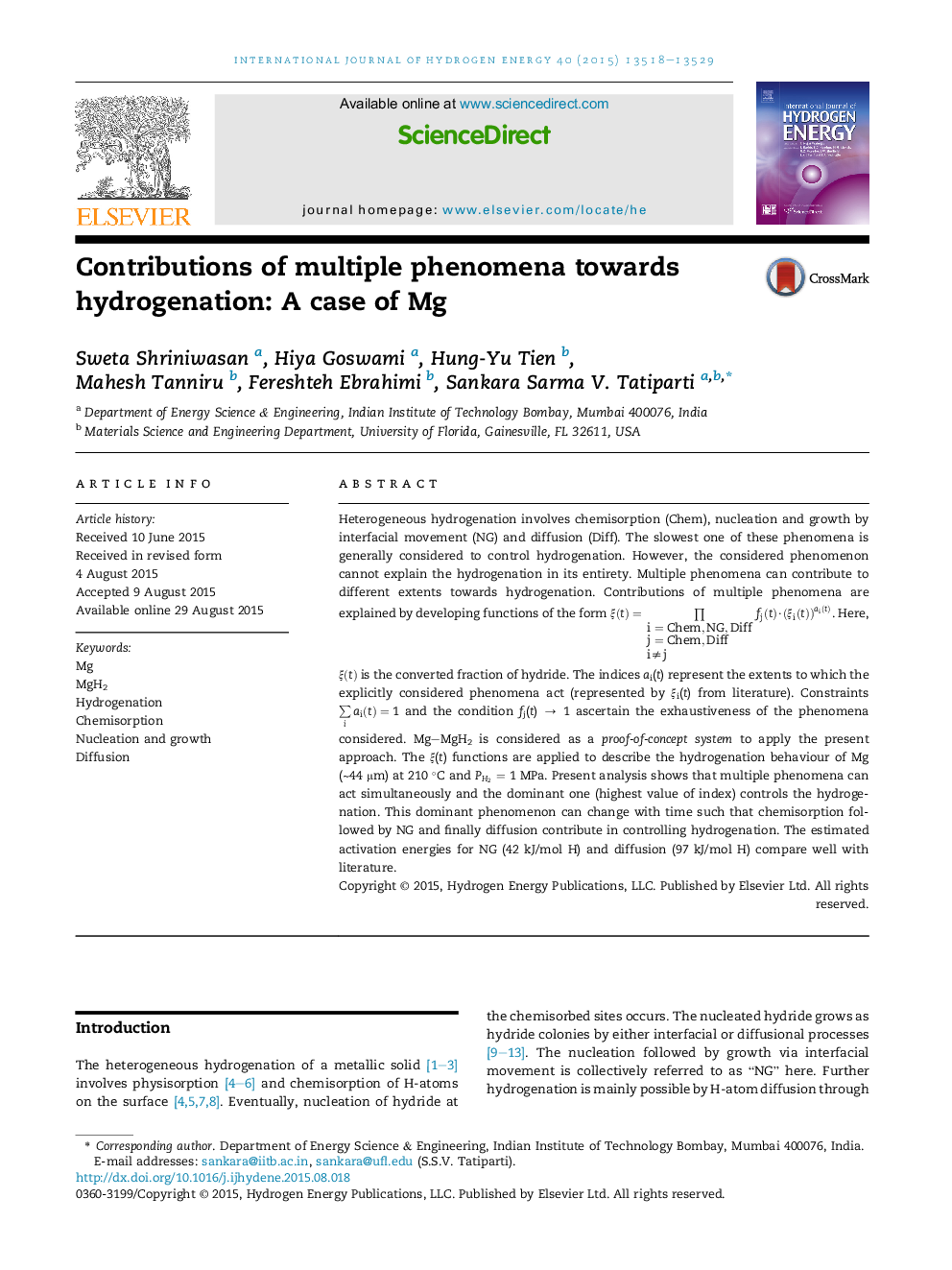| کد مقاله | کد نشریه | سال انتشار | مقاله انگلیسی | نسخه تمام متن |
|---|---|---|---|---|
| 1274643 | 1497434 | 2015 | 12 صفحه PDF | دانلود رایگان |

• Chemisorption, nucleation and growth, and diffusion contribute to Mg hydrogenation.
• Developed mathematical model describes multiple phenomena in Mg hydrogenation.
• Multiple phenomena act together to varying extents during Mg hydrogenation.
• Phenomenon corresponding to highest extent controls hydrogenation at any time.
• The controlling phenomenon changes with time during Mg hydrogenation.
Heterogeneous hydrogenation involves chemisorption (Chem), nucleation and growth by interfacial movement (NG) and diffusion (Diff). The slowest one of these phenomena is generally considered to control hydrogenation. However, the considered phenomenon cannot explain the hydrogenation in its entirety. Multiple phenomena can contribute to different extents towards hydrogenation. Contributions of multiple phenomena are explained by developing functions of the form ξ(t)=∏i=Chem,NG,Diffj=Chem,Diffi≠jfj(t)·(ξi(t))ai(t). Here, ξ(t)ξ(t) is the converted fraction of hydride. The indices ai(t) represent the extents to which the explicitly considered phenomena act (represented by ξi(t ) from literature). Constraints ∑iai(t)=1 and the condition fj(t) → 1 ascertain the exhaustiveness of the phenomena considered. Mg–MgH2 is considered as a proof-of-concept system to apply the present approach. The ξ(t ) functions are applied to describe the hydrogenation behaviour of Mg (∼44 μm) at 210 °C and PH2PH2 = 1 MPa. Present analysis shows that multiple phenomena can act simultaneously and the dominant one (highest value of index) controls the hydrogenation. This dominant phenomenon can change with time such that chemisorption followed by NG and finally diffusion contribute in controlling hydrogenation. The estimated activation energies for NG (42 kJ/mol H) and diffusion (97 kJ/mol H) compare well with literature.
Figure optionsDownload as PowerPoint slide
Journal: International Journal of Hydrogen Energy - Volume 40, Issue 39, 19 October 2015, Pages 13518–13529